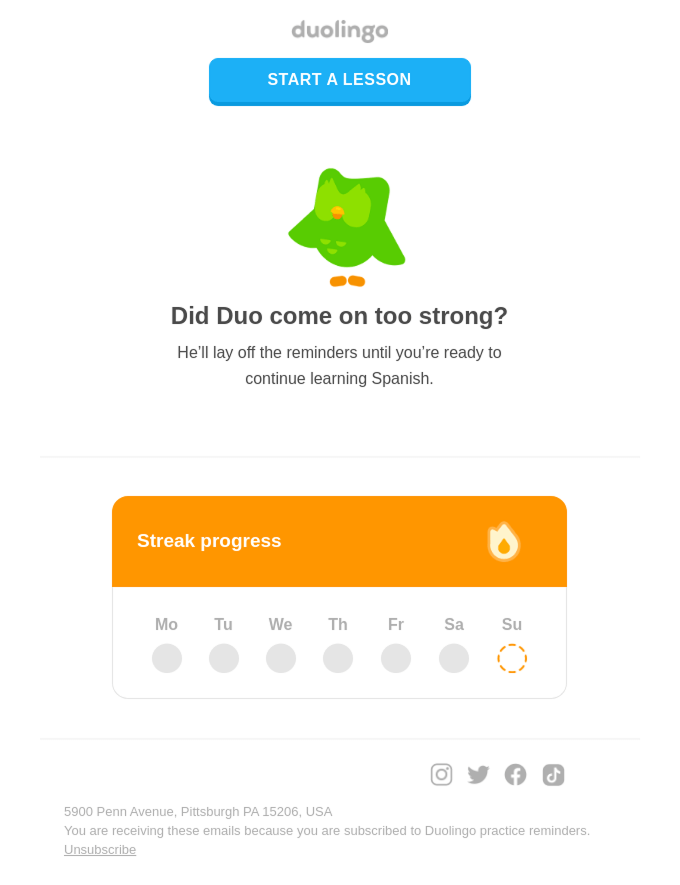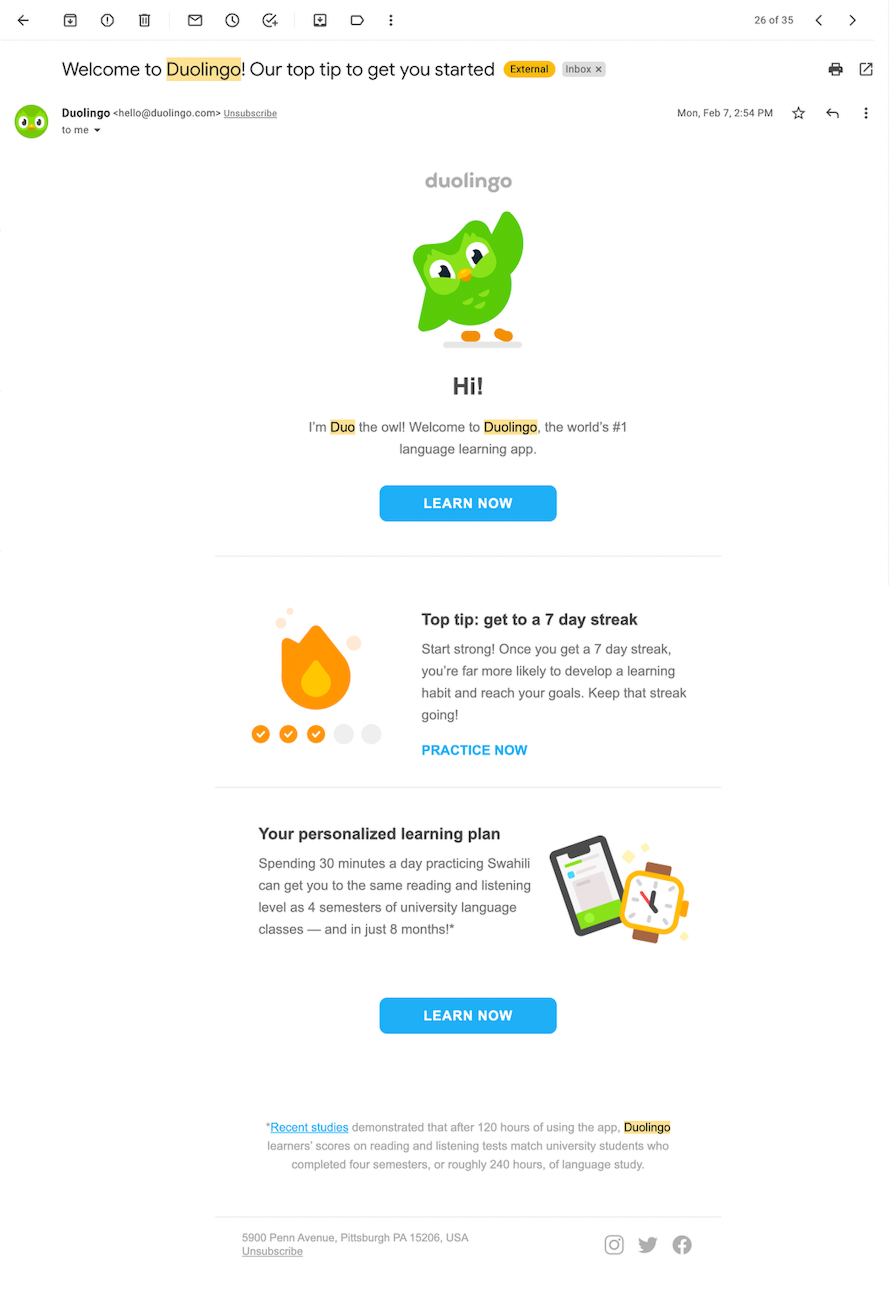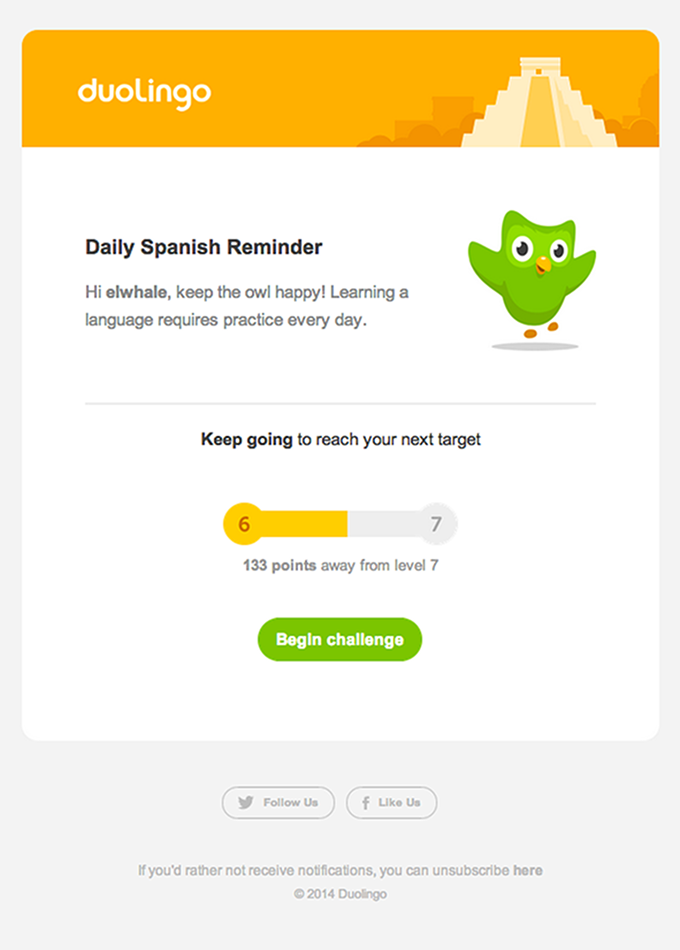
How one simple email type can 10x your user retention

One of the best ways to increase user engagement, sales, retention, and even website traffic is through transactional emails. Transactional emails often get open rates between 40 % and 85 %1, whereas marketing emails tend to land in the 20 %–25 % range2. In many cases, brands report 8x more opens and clicks via transactional emails3.
Transactional emails are automated messages sent to users when they take (or don’t take) an action on your website or app. This could be signing up, making progress, completing a challenge, staying inactive for a specific time, or even achieving a milestone. These are not your regular marketing emails that scream “buy now.” Instead, they are more personal, direct, and action-driven — because they’re based on what the user has done.
The purpose of this post is to show you exactly how to use transactional emails not just to deliver updates, but to drive real behavior. You’ll learn how to turn these simple notifications into tools that re-engage inactive users, celebrate active ones, and make your product feel alive — just like Duolingo does.
In Duolingo, you can find one of the best implementations of transactional emails

Duolingo doesn’t just send random updates. They actively use transactional emails to follow up with users who haven’t practiced that day, congratulate those who hit a long streak, or celebrate a challenge completed. It’s like the app is alive — noticing what you do and cheering you on every step of the way.
There’s a reason why they do it.
When a company sends an email exactly when a user does something (or doesn’t), it’s a small but powerful signal that says, “We’re paying attention.” It feels like someone is in the room with you — not in a creepy way, but like a friend or a coach reminding you, “Hey, you’re doing great. Don’t stop now.”
This feeling makes users want to come back. Subconsciously, they don’t want to let that “someone” down. It gives a sense of accountability — and accountability drives consistency.
So, having transactional emails for new users (like login confirmations, authentication, or welcome messages) is a must. But beyond those basics, there’s a whole world of opportunity to use these emails creatively — to bring users back, keep them engaged, and even attract new ones.
Let’s explore exactly how.
Re-engaging inactive users
Give them a reason that feels personal
It’s not enough to just say, “Come back and use our product.” That never works.
Humans need a reason to justify why they should return. You must show them the value they’re missing out on and how easy it is to get it back.
Think of it like this: you’re not begging them to come back — you’re reminding them of what’s already theirs.
For example, if you run a budgeting app, your message could say:
“You’ve saved $1,200 over the past few months. Don’t stop now — you’re on track to reach your next goal!”
Simple, right? It triggers emotion. It’s proof of progress. People love money, and when they realize they’re walking away from savings or progress, they come back.
Now, look at Duolingo again. When someone skips a day after building a 416-day streak, Duolingo doesn’t say, “Please come back.” Look at what Duolingo does
“You had a 416-day streak. Don’t lose it now.”
There’s no threat, no pushiness — just a gentle reminder of what’s at stake. They’ve invested 416 days of effort. It’s personal, emotional, and powerful.
This is the “Save it!” approach. You’re reminding users they have something to protect — whether it’s a streak, savings, achievements, progress, or even reputation.

But what about users who don’t have anything to lose yet?
When there’s nothing to lose, give them something
If users haven’t built up any history, progress, or savings yet, you can create something for them to value.
A great way to do this is by offering limited-time boosts, discounts, or rewards — anything that gives them a reason to return quickly.
Once again, Duolingo uses this beautifully. They offer XP boosts or free trials for premium features. But here’s the key: they don’t just say, “Here’s a free boost.” They tie it to behavior and emotion.
“Come back today and get a free XP boost to level up faster!”
This kind of message connects the offer with a result. It feels earned, not random. It gives users the sense that they’re getting rewarded for their journey, even if they paused for a while.
If you want to go one step further, give every user something — but package it differently for different segments.
For active users, it’s a reward for consistency.
For inactive users, it’s a “welcome back” bonus.
The same offer, but a completely different psychological effect.
And always tie the offer to a real-world outcome: not just “get free coins,” but “get free coins to reach your next milestone.” Not “get a discount,” but “save 20% while picking up where you left off.”
You’re not just giving them something — you’re giving them a reason.
Bonus strategy: remind users of what they’ve started
If your product involves building something, tracking progress, or ongoing projects, you have an extra advantage.
People hate leaving things unfinished.
If a user started a project, built part of something, or made partial progress, send a transactional email reminding them about it. Make it specific.
“You’ve written 432 lines of code. Your project ‘Fitness App’ is 67% complete. Finish strong!”
This kind of email reawakens the spark that made them start in the first place. It turns an inactive user into a motivated one.
If possible, include visuals — graphs, bars, percentages, or progress meters. A simple visual reminder of “how far you’ve come” can do more than ten lines of text ever could.
Keeping active users engaged
Celebrate and guide them
Now that we’ve talked about getting users back, let’s focus on keeping the ones who are already active.
The most powerful way to keep active users engaged is through milestones.
Every time they achieve something meaningful — complete a task, hit a target, make a purchase, or cross a certain number — send them an email celebrating it.
But don’t stop there.
Use that moment to show them:
What they’ve accomplished (data or summary)
What it means (impact or next step)
And how they can keep going (tips, upgrades, or challenges)
For example:
“You’ve completed 10 budgeting goals in a row! Here’s a quick report of your progress, plus 3 ways to make next month even better.”
Add small rewards too — badges, boosts, discounts, or even simple recognition. Humans love being noticed. A message that says “You did great!” might sound simple, but it builds attachment, and attachment keeps users coming back.

Action triggers: celebrate every step they take
Another excellent way to keep engagement high is to send action-triggered emails whenever a user completes something new.
It doesn’t have to be a big event. Even small wins deserve recognition.
“You just created your first budget.”
“You’ve learned 10 new words today!”
“Your project just reached 80% completion!”
Each email should tell users:
What they just did.
What it means (the result or impact).
And, ideally, what they should do next.
That last part is key — always point to the next step.
If they just completed one thing, show them the next logical action. That keeps them in a loop of progress, always moving forward.
These action triggers matter because they meet the user right at the moment of motivation. When someone completes a task, even a small one, they feel a tiny burst of pride and energy. Psychologists call this the “progress principle”
Using social proof: show what others are doing
If your app or product has any community aspect, use that energy.
Transactional emails that show what other users are doing build social proof and spark healthy competition.
“3,200 users started new projects this week — join them!”
“You’re in the top 10% of learners this month!”
When people see others being active, they naturally want to be part of the group. It’s simple human behavior — no one wants to feel left behind.
It also shows that your product isn’t static. It’s alive. It’s growing. And being part of that movement feels rewarding.
The creative edge: don’t reinvent the wheel, just personalize it
The truth is, you don’t have to come up with something revolutionary. The best ideas often come from what’s already working — just executed in your own voice, your own product, and your own brand tone.
Start by studying how big apps do it.
Duolingo. Notion. Headspace. Strava. Calm.
Each of them uses transactional emails differently, but the principle is the same: recognize, reward, remind.
Once you understand that pattern, you can craft your own variations that fit your audience perfectly.
The psychology behind it all
Transactional emails work because they tap into three simple human needs:
Recognition — People want to feel seen. When an app notices what they did, it feels personal.
Progress — Humans crave completion. Showing them how far they’ve come encourages them to finish.
Belonging — When they see others achieving something, it drives them to stay part of the group.
Every successful transactional email plays on at least one of these.
When you combine all three — recognition, progress, belonging — you create a powerful system that keeps users emotionally tied to your product.
Final thoughts: stay close to your users
Your users are your most important asset as a founder. If you lose touch with them, you lose everything.
Transactional emails are not just digital notifications — they’re touchpoints of trust. Every time you send one, you remind your users that you’re there, watching, and rooting for them.
Stay in touch. Stay personal. Stay consistent.
Because when you show up for your users, they’ll keep showing up for you.
Footnotes
-
Mailgun, “Transactional Emails vs. Marketing Emails,” https://www.mailgun.com/blog/deliverability/transactional-emails-vs-marketing-emails/?utm_source=chatgpt.com ↩
-
SendX, “Email Marketing Benchmarks,” https://www.sendx.io/blog/email-marketing-benchmarks?utm_source=chatgpt.com ↩
-
Campaign Monitor, “24 Email Marketing Stats You Need to Know,” https://www.campaignmonitor.com/resources/infographics/24-email-marketing-stats-need-know/?utm_source=chatgpt.com ↩